Mazda CX-90 Vs Mazda CX-9 Comparison

Welcome to another AutoGuide comparison test brought to you by WeatherTech. This is a breakout faceoff from our big three-row SUV comparison earlier this month. Here, it’s sibling rivalry time.
In the red corner is the Mazda CX-9. A critical darling of the three-row pack, Mazda’s original three-row is a sharp-handling (and sharp-looking) SUV.
In the, uh, other red corner is the brand new 2024 Mazda CX-90. The latest in the Japanese brand’s continued march upmarket, the CX-90 rides on a whole new platform, features a new inline-six, mild-hybrid powertrain, and has the German luxury brands in its sights.
Get the Flash Player to see this player.
Is there enough clear air between these two to justify their joint existence? Let’s find out.
Get a Quote on a New 2023 Mazda CX-9Mazda CX-90 vs Mazda CX-9: Styling
The CX-9’s shape has been pretty consistent for a while now. It’s the same Mazda styling cues we’ve known for years, and there’s nothing wrong with that. The CX-9 is handsome, with a wide hood, squinty headlights, and that stand-out shield grille.
Move around to the back and there’s a classy strip of chrome pairing the taillights together—which are also very traditional Mazda. We don’t love these plain-looking 20-inch alloys, but on the flip side, we will always say yes to Soul Red.
SEE ALSO: Best 3-Row SUV: New Mazda CX-90 vs 7 RivalsThe CX-90 doesn’t even offer Mazda’s signature hue. Say hello to Artisan Red, which is, appropriately enough, a very wine-like color for this fancy-pants new model. The CX-90 subtly updates Mazda’s house style for a new decade: the headlights are a little squarer, the taillights a little longer. The nose is nice and low for better looks and visibility, and the flanks are super clean.
In Mazda’s hunt for the luxury brands, the CX-90 rides on positively enormous 21-inch wheels, with a cool two-tone design. The tires are also a wide 275-section.
Interior and Cargo Space
The CX-9 pretty much led the way for premium cabins in mainstream brands. There’s a distinct air of quality here, even as one of the oldest models on the market. Material quality is generally great, with only the faux wood really seeming out of place. The subtly two-tone setup is a little too subtle for our tastes, but it shows the old sartorialist suggestion to never mix black and brown is out-of-date. The dashboard is simple and sleek, flowing into a super-wide center console. Meanwhile, the main controls are all nicely grouped and easily in reach.
Both of these Mazdas offer supportive and comfortable front seats. The older car’s are more heavily bolstered, so those looking for a sportier experience may prefer that.
SEE ALSO: Nissan Pathfinder vs Mazda CX-9 ComparisonMazda has went for some non-traditional materials and a classic, simple design in the CX-90, which results in a bright, airy cabin. A unique fabric covers the dashboard and door cards, and there are highlights of light wood and highly reflective chrome dotting the door panels. We especially like the hanging stitch running across the dashboard face, a nod to ancient Japanese bookbinding techniques. Even though it’s broadly similar in its proportions, the center console doesn’t feel as enormous as the one in the older car. The flatter surface and pint-sized shifter no doubt help, here.
Folks hopping into the CX-90 from a German car will feel right at home behind it’s thicker steering wheel—though I’d say the older car’s actually feels better to the touch.
The second row experience is more of a wash. There’s not a ton of headroom in either, but the newer Mazda offers a panoramic moonroof, which at least makes its middle row feel more airy and spacious.
It’s the third row that the older model starts to lose ground. Neither offers class-leading way-back legroom, but the CX-9’s seats are tight and low to the floor, so your legs are all folded up. There’s not a lot of natural light, either. The CX-90 is a little bit better, with more creature comforts back there, too.
It’s important to note that both of these models had a six-seat layout, and other models can come with a second-row bench for an additional spot. Only the CX-90 can come in eight-passenger form, however.
SEE ALSO: Kia Telluride vs Subaru Ascent ComparisonMazda CX-90 vs Mazda CX-9 Comparison: Tech and Features
Criticisms of Mazda’s current infotainment system are well-established here at AutoGuide. For years, the Japanese brand has defended its non-touchscreen setup on safety grounds: there are numerous studies that show touchscreens are distracting. We applaud that, we do—but the rotary dial setup is still a frustrating one for passengers. In the CX-9, you’re handling all this via a deep-set, 10.25-inch screen with limited capacity for things likeThen there’s the rotary dial to control the wide infotainment screen, because yes, this still has no touchscreen capacity. Mazda says that’s a safety concern, and we get it, but it makes the system frustrating for passengers.
The same basic system exists in the CX-90 too: there’s just a bigger screen, now 12.3 inches. Honestly, that’s probably its single biggest hurdle with traditional luxury buyers; the Mazda system just doesn’t feel premium.
The Mazda CX-9 comes well equipped, with tri-zone climate control, heated second row seats, heated and ventilated front seats, a head-up display, 360 degree camera, wireless phone charging, and navigation.
The CX-90 does all of that too, but it piles on the luxury with more premium trimmings. The fresh model also boasts more charging ports, wireless Apple CarPlay and Android Auto, a pano moonroof, and second-row ventilated seats. We also really appreciate the in-cluster adaptive cruise display, which shows the CX-90’s position in its lane as well as surrounding traffic.
Powertrain, Driving Feel, and Efficiency
Both vehicles use turbocharged engines, though very different in design.
The CX-9’s is Mazda’s ubiquitous 2.5-liter four-cylinder turbo, pushing out 250 horsepower and a big 320 pound-feet of torque, at least on premium fuel. It’s not new, but it ain’t broke, either: the CX-9 moves well in everyday use, with a strong mid-range and plenty of passing power. The six-speed automatic is just okay, though: it’s not too bad in terms of shift smoothness or speed, but the lack of gears means the CX-9 has to run at higher rpms on the highway.
When it comes to ride quality, the CX-9 is one of the firmer rides on the market. It makes the CX-9 feel responsive, especially with the well-weighted, accurate steering. The elder Mazda doesn’t have the refinement of its newer sibling, but its relative light weight makes it feel eager on back roads, and smaller.
The CX-90 uses a whole new 3.3-liter inline-six. This one is the higher-powered option, which puts down a very healthy 340 horsepower and 369 pound-feet of torque. More than the extra power, it’s the silky-smooth delivery that helps the CX-90 feel distinctly more premium. The new Mazda simply sails down the road. Helping it out is a new eight-speed automatic that’s an in-house design. The transmission houses a mild-hybrid system too, so low-speed pick-up is strong, and the start-stop seamless. It’s also super efficient, with a quoted 28 mpg highway figure, but in use the CX-90 almost saw 30.
Like its elder sibling, the CX-90 does ride with a little more firmness than your average three-row. Over bumps and potholes, the CX-90 is never harsh; just composed. It also does that fine Mazda trick of feeling smaller and lighter than it really is.
Pricing and Value
Pricing is naturally a pretty big gap between these two. As tested the CX-9 rings in at just $50,330 in the US, including destination. The CX-90 is a significantly higher $61,920 as equipped. In Canada, the gap is smaller: the CX-9 is $56,495 in Canadian loonies. Meanwhile the CX-90 is $65,745.
As we discussed in our mega-comparo, the CX-90 has a sweet-spot lower-powered engine option that still posts healthy figures (280 hp / 332 lb-ft), but drops that price way down. You do lose out on a handful of features, like the second-row ventilated seats, but it’s worth considering if you like the newer package but the older price tag.
Want to go the other way? Mazda offers a plug-in hybrid with the nat-asp 2.5-liter and an electric motor. Combined system horsepower is 323, while torque stays the same as this tester. It’ll do about 26 miles on a charge (46 km), as well.
Verdict: Mazda CX-90 vs Mazda CX-9 Comparison
Every time Mazda drops a new double-digit SUV, we have to ask the question: does the single-digit still make sense? The results until now have been 50/50: the CX-3 is dead, but there’s a functional difference between the CX-5 and CX-50.
With these two, it’s another win. The CX-9 still appeals, as a more traditionally mainstream three-row. Or, more accurately, more of a larger two-row with jump seats; a 4+2 if you will.
Meanwhile the CX-90 is a bona fide luxury offering, feeling every inch the competitor for the Germans. It’s smooth, swanky, and just different enough to appeal to people who want something that stands out. It turns out there’s room in the family after all.
Become an AutoGuide insider. Get the latest from the automotive world first by subscribing to our newsletter here.

Kyle began his automotive obsession before he even started school, courtesy of a remote control Porsche and various LEGO sets. He later studied advertising and graphic design at Humber College, which led him to writing about cars (both real and digital). He is now a proud member of the Automobile Journalists Association of Canada (AJAC), where he was the Journalist of the Year runner-up for 2021.
More by Kyle Patrick



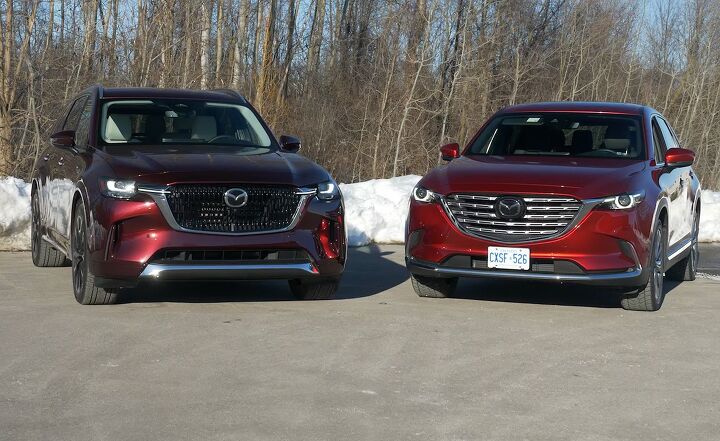


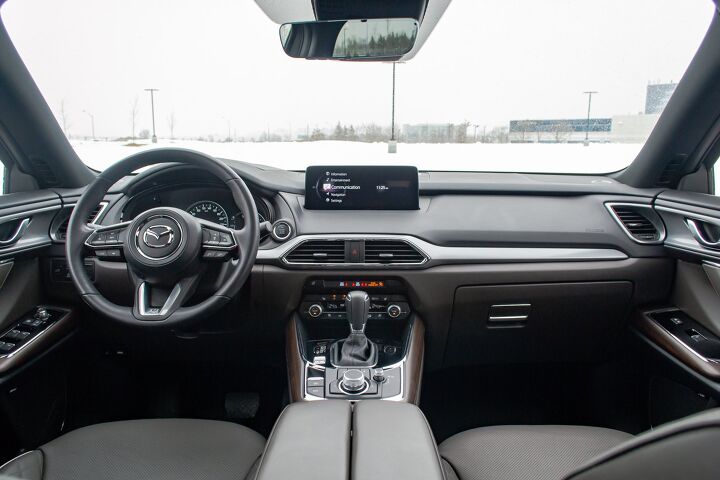

























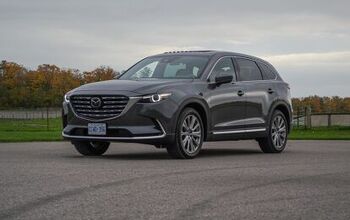
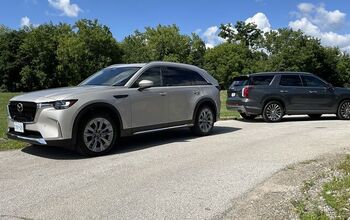

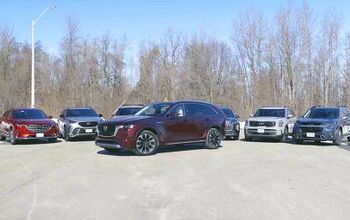


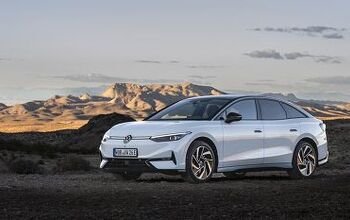
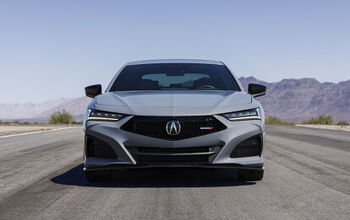



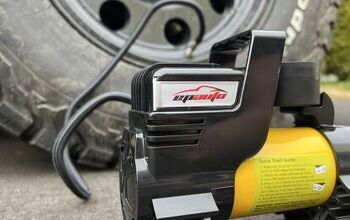


Comments
Join the conversation
Thanks for the comparaison. I have a 2014 CX-9 which still works flawlessly but really tempted by the CX-90 especially with the 5000lb towing capacity and package with brake controller etc... As I'm thinking of upgrading my camper..
Big Mazda fan here. Leased new CX9 to replace CX5. Rides and handles well. CX90 appears to be mechanically improved, but at a steep price. And personally the CX9 wins exterior styling. Looking forward to CX70 which might be the sweet spot.